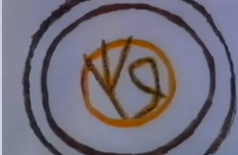From the Daily Mail:
A small onyx stone believed to have been worn in the sacred breastplate of the High Priest of Jerusalem may have been found after being missing for more than 1,000 years.
…The owner claims the stone was given to a distant ancestor as a reward from the High Priest in 1189 and has been passed from generation to generation of the family since.
By “found after being missing for 1,000 years”, the paper in fact means “has been noticed again after it appeared on South African television some years ago” – indeed, the article comes with the clip embedded. The South African clip was uploaded to Youtube in 2015, and the uploader says that it dates to 1991; there is no reason to doubt that this is correct.
The article is a rewrite of a piece that appeared recently in Breaking Israel News, a Jewish website that caters for Jewish and Christian enthusiasts for stories that supposedly indicate that the “End Times” are just around the corner (I discussed the site recently here). In this instance, BIN believes that the stone has “the power of prophecy and it may play an important role in returning the Priestly Caste to serve in the Temple.” It appears that the author phoned up a couple of people who examined the stone in the past as a hook on which to present it as news.
Here’s the Bible’s description of the stone in context, from Exodus 28
Fashion a breastpiece for making decisions—the work of skilled hands… It is to be square—a span long and a span wide—and folded double. Then mount four rows of precious stones on it. The first row shall be carnelian, chrysolite and beryl; the second row shall be turquoise, lapis lazuli and emerald; the third row shall be jacinth, agate and amethyst; the fourth row shall be topaz, onyx and jasper. Mount them in gold filigree settings. There are to be twelve stones, one for each of the names of the sons of Israel, each engraved like a seal with the name of one of the twelve tribes… Whenever Aaron enters the Holy Place, he will bear the names of the sons of Israel over his heart on the breastpiece of decision as a continuing memorial before the Lord.
Later tradition suggests that the gems would answer questions by lighting up, and that the names of the 12 tribes were engraved on them by means of a mysterious object or creature that served as stylus, called the “shamir”.
The stone discussed by BIN appears to have two ancient Hebrew letters burnt into it (a bet and a kaph), although the 1991 report also states that the stone is “surrounded by controversy” and that the letters could in fact be a “quirk of nature”. The alleged “letters” are spidery and, if man-made, are crudely rendered (see screenshot of sketch from the video below). However, if there was a public controversy in 1991, the details have not made their way online so far as I can see.
BIN also gives the backstory to its current ownership by a family in South Africa:
According to the Auret family tradition, the ancestor, named Croiz Arneet deTarn Auret, received the stone from “the High Priest” in gratitude for his part in freeing Jerusalem around 1189. The custodianship of the stone was passed on in the Auret family through the male line until the nineteenth century. That tradition was broken when Abraham Auret passed away in 1889, bequeathing the stone to his daughter, Christina Elizabeth.
After her marriage to William James Hurst, the stone left the Auret name, and has been passed on from mother to daughter ever since. Meticulously recorded family trees and genealogical reports corroborate the story.
This is all rather dubious – there was no “High Priest” in Jerusalem in 1189, which was more than a thousand years after the destruction of the second temple, and the city was not “freed” in that year, either. Jerusalem was under Crusader control from 1099 to 1187, and then again from 1229 to 1244, but the Latins initially massacred Jews in the city – the idea of a local Jewish figure greeting a Knight Templar (as the article describes the ancestor) as some sort of liberator is both ludicrous and grotesque.
Of course, it could be that a Crusader was given (or found) the stone in different circumstances, and that the “High Priest” aspect of the story is a garbled recollection, but there are further difficulties.
First, the name “Croiz Arneet deTarn Auret” does not appear to be known to historians (and I’ve checked some possible variants, such as “Croix Arneet de Tarn Auret”), and it should be noted that it is unclear whether the “meticulously recorded family trees and genealogical reports” refer to this supposed ancient lineage or the later Auret/Hurst association. Unless Abraham Auret can be linked to some great aristocratic family (and if he can be, why doesn’t the article do it?), the idea that he could trace his ancestry back to someone in the twelfth century is incredible, let alone that an object might have been passed down father-to-son with an account of its provenance.
Second, the story just takes us back to the twelfth century CE. The Paleo-Hebrew “letters”, if genuine, would mean the stone was fashioned during the First Temple period, which ended violently in 587 BCE – BIN, citing the late Professor Moshe Sharon from the University of Witwatersrand, suggests the script indicates it is “from the year 1000 BCE, give or take 200-300 years”. How would the stone’s history have been preserved privately between 587 BCE and 1189 CE? This is fanciful in the extreme.
Filed under: Uncategorized | 1 Comment »



